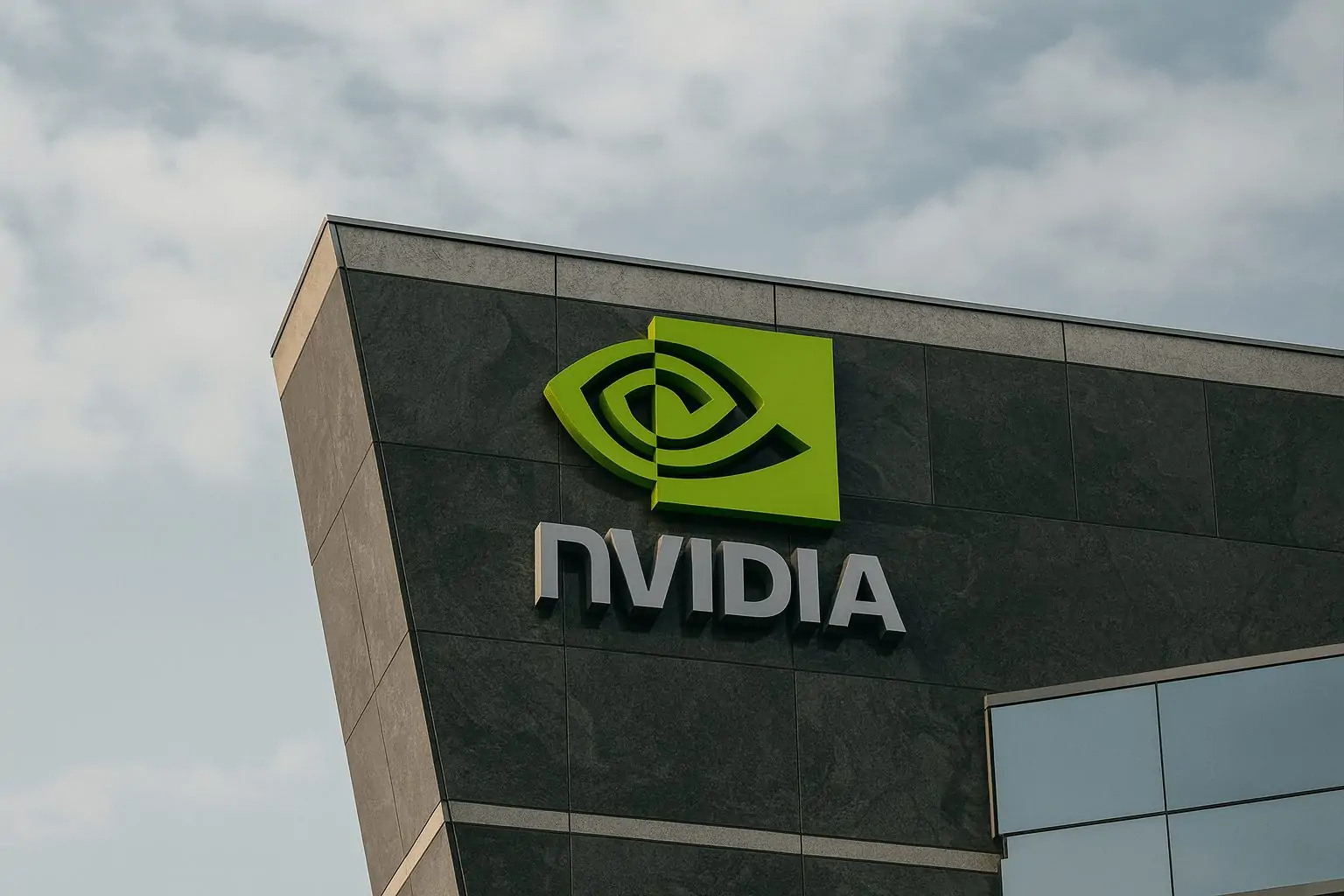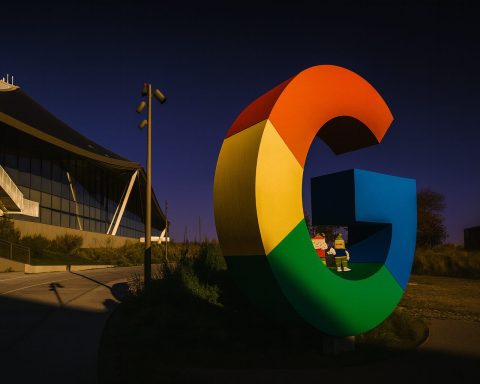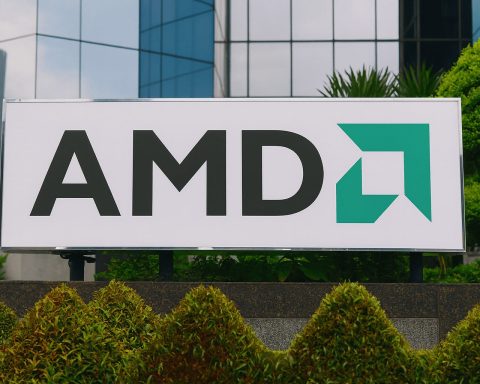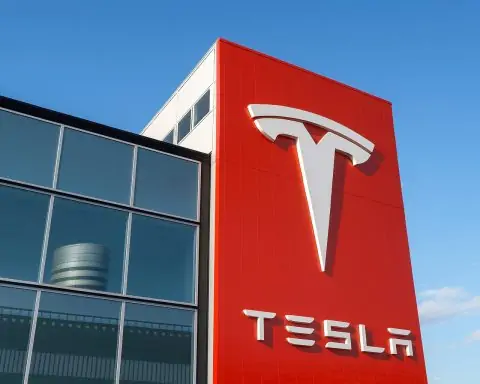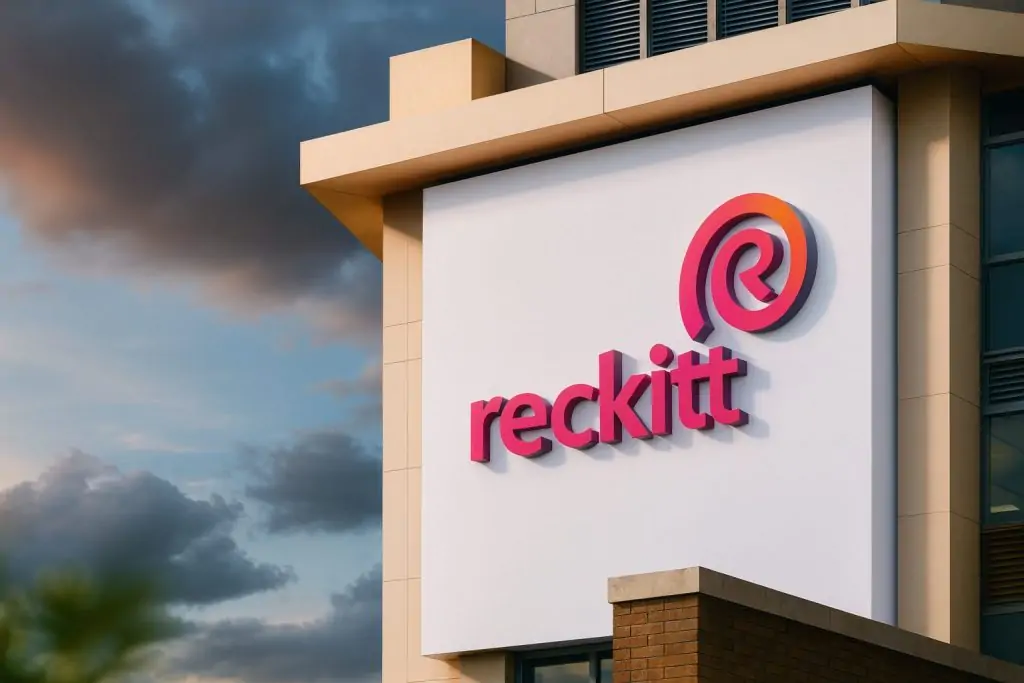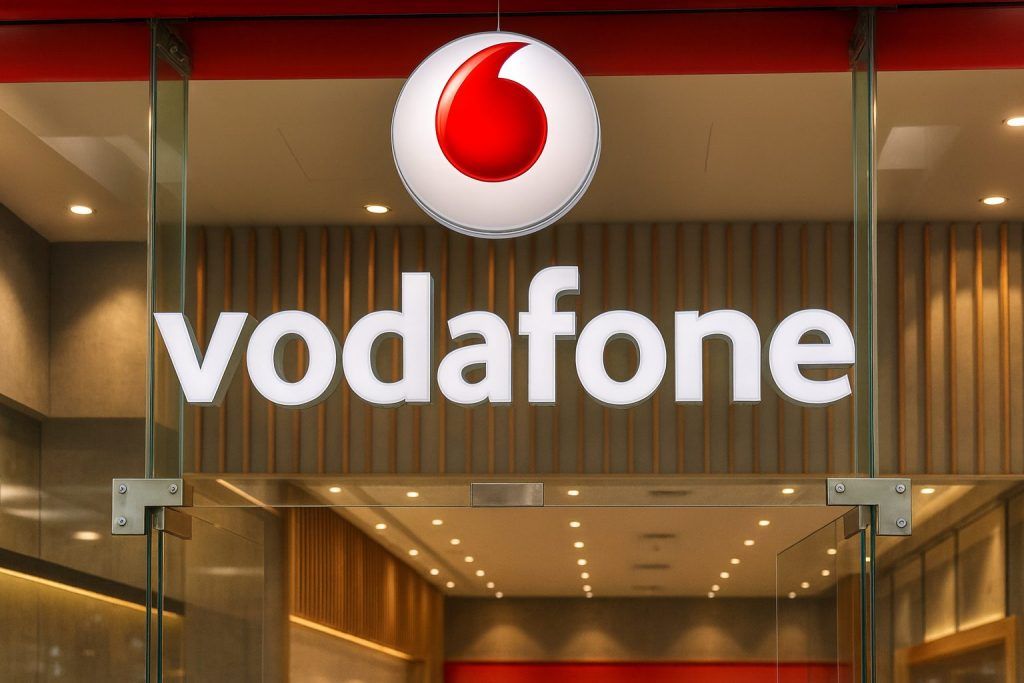Ticker: NVDA · Exchange: Nasdaq · Date: November 26, 2025
Key takeaways for Nvidia stock today
- Nvidia shares are under pressure again after a report that Meta may shift part of its future AI chip spending to Google’s custom TPUs, sparking fears over Nvidia’s AI dominance. [1]
- The stock fell around 2.6% on Tuesday and is down roughly the mid‑teens percentage range for November, erasing more than $700 billion in market value as investors question whether AI spending is becoming a bubble. [2]
- Fundamentals remain extremely strong: Q3 fiscal 2026 revenue jumped 62% year over year to a record $57.0 billion, with data‑center sales up 66% and gross margin in the mid‑70s. [3]
- Nvidia is pushing back hard on the narrative that Google is catching up, arguing its GPUs are “a generation ahead” and that its CUDA platform and roadmap (Blackwell, Rubin, Feynman) give it a durable edge. [4]
- New headwinds are emerging from China: Beijing has reportedly blocked ByteDance from using Nvidia chips in new data centers, and U.S. export policy around Nvidia’s most advanced chips is still in flux. [5]
- Wall Street is split: some strategists and rating agencies call the selloff a rare “buy the dip” moment and have upgraded NVDA to “strong‑buy,” while others say fears about competition and capital‑spending excesses are justified. [6]
Where Nvidia stock stands on November 26, 2025
After Tuesday’s session, Nvidia closed around the high‑$170s per share, with data providers showing a drop of about 2.6% on the day as traders reacted to headlines about Meta’s interest in Google’s AI chips. [7]
Zooming out:
- Month‑to‑date: Nvidia is now down roughly 14% for November, wiping out more than $700 billion in market value. [8]
- Year‑to‑date: despite the pullback, shares are still up strongly in 2025 (around a third, by some estimates), though rivals like Broadcom have outperformed this year as investors seek AI exposure beyond Nvidia. [9]
- Versus the broader market: global equity indices are rallying on growing expectations of a Federal Reserve rate cut in December, but Nvidia is notably lagging the risk‑on mood this week. [10]
In pre‑market trading today, financial media reported Nvidia “down slightly” as investors continued to digest Google’s TPU push and the Meta headlines. [11]
Today’s main story: Meta–Google chip talks shake confidence in Nvidia’s AI moat
The dominant narrative around Nvidia on November 26, 2025 is straightforward:
Can Google’s TPUs and other custom chips start eating into Nvidia’s AI stronghold?
Meta + Google: a symbolic threat
Multiple outlets report that Meta is in talks to spend “billions of dollars” on Google’s tensor processing units (TPUs) for its data centers starting around 2027, and may rent TPU capacity from Google Cloud as soon as next year. [12]
Why that matters:
- Meta is one of the largest AI infrastructure spenders in the world, guiding $70–72 billion in capex this year. [13]
- Meta is also a major Nvidia customer, so even a partial shift to Google TPUs would represent a real share‑of‑wallet loss for Nvidia in future cycles. [14]
- Analysts estimate that the Google–Meta relationship could eventually divert a meaningful single‑digit percentage of Nvidia’s annual AI revenue, if the deal is fully realized. [15]
On Tuesday, this story triggered:
- Intraday declines of 6–7% in Nvidia, before the stock trimmed losses into the close. [16]
- A sharp rally in Alphabet (Google’s parent) and strength in vendors like Broadcom that are tied to Google’s AI chip supply chain. [17]
The upshot for today: markets are openly debating whether this marks a turning point from Nvidia’s near‑monopoly on AI accelerators toward a more competitive landscape where hyperscalers mix GPUs with their own custom chips and Google’s TPUs. [18]
Nvidia’s response: “A generation ahead” and leaning on CUDA
Nvidia is not taking the Google narrative quietly.
Over the past 24 hours, the company has been unusually vocal on social media and in interviews, stressing that:
- It is “delighted by Google’s success” but still believes its GPUs are “a generation ahead of the industry” in performance and flexibility. [19]
- Its GPUs run every major AI model across clouds and on‑premise environments, while TPUs and other ASICs tend to be more narrowly optimized. [20]
Tech‑focused analysis pieces published today echo this framing:
- Tom’s Hardware notes that Google’s TPUs are gaining momentum, but argues they are “only a minor threat” near‑term because Nvidia’s platform and ecosystem (CUDA, libraries, tools) are deeply entrenched with developers. [21]
- Other explainers highlight Nvidia’s multi‑year hardware roadmap — from Blackwell to Rubin (scheduled for mass production in late 2025 / early 2026) and Feynman in 2028 — as evidence that it is planning for sustained AI leadership. [22]
A separate wave of commentary emphasizes the CUDA ecosystem:
- Nvidia’s GPUs are the default target for most production‑grade AI frameworks, from large language models to recommendation systems.
- Startups and enterprises have built tools, deployment stacks and skill sets around CUDA over many years, making a switch to alternative hardware non‑trivial, even if TPUs or custom ASICs look cheaper on paper. [23]
Bottom line for today: Nvidia is trying to convince markets that its moat is platform‑level, not just chip‑level, and that Google’s TPUs will coexist with GPUs rather than replace them at scale.
Earnings backdrop: record numbers, but AI‑bubble jitters
The current selloff is happening right after stunning quarterly results.
On November 19, Nvidia reported Q3 fiscal 2026 (quarter ended October 26, 2025): [24]
- Revenue: $57.0 billion (up 62% year over year, up 22% quarter over quarter)
- Data‑center revenue: $51.2 billion (up 66% YoY), now the overwhelming majority of sales
- GAAP gross margin: ~73% (mid‑70s on a non‑GAAP basis)
- Net income: $31.9 billion, up about 65% from a year ago
- Q4 guidance: revenue around $65 billion, above analyst consensus and implying continued explosive AI demand
CFO Colette Kress and CEO Jensen Huang have also flagged roughly $0.5 trillion in combined Blackwell and Rubin revenue “visibility” through 2026, underscoring how deeply booked the company’s AI pipeline appears to be. [25]
Yet, as several pieces out today from Investopedia, Bloomberg and others point out, the stronger the numbers, the more investors worry about what comes next. [26]
Key concerns dominating coverage:
- AI bubble fears: Are hyperscalers over‑building data‑center capacity and taking on too much debt for AI projects that may not monetize as quickly as hoped? [27]
- Customer concentration: Around 61% of Nvidia’s revenue now comes from four major customers, heightening worries about any one of them pivoting to alternative hardware. [28]
- Circular investment patterns: Nvidia has invested in some of the very AI companies that buy its GPUs, drawing comparisons to “vendor financing” from the late‑1990s dot‑com era. [29]
A popular theme in today’s commentary is that Nvidia’s fundamentals still scream “hyper‑growth,” but sentiment is going through a necessary reset after a massive run‑up and increasingly crowded AI trade. [30]
New China risks: export controls and ByteDance ban
Separate from the Google headlines, regulatory and geopolitical risks around China are also making news today:
- Reuters reports that Chinese regulators have blocked ByteDance (TikTok’s parent) from using Nvidia chips in its new data centers, part of Beijing’s broader push to rely more on domestic AI chips. [31]
- ByteDance has been one of Nvidia’s largest customers in China, stockpiling chips amid U.S. export restrictions. The move underlines how political decisions can quickly reshape demand. [32]
- On the U.S. side, reporting this week indicates that President Trump is weighing whether to allow sales of Nvidia’s high‑end H200 and Blackwell‑class AI chips to China, underlining how export policy remains a major swing factor for future revenues. [33]
Earlier in 2025, Nvidia also halted production of its H20 chip for China after Beijing signaled concerns, and today’s coverage is increasingly treating China as a structurally more challenging market for the company. [34]
For investors, the takeaway is that Nvidia’s China exposure is becoming more regulated, more political and less predictable, even as demand for AI hardware inside China remains huge.
Analyst and investor reaction: Buy the dip, or not?
The news flow on November 26 is not uniformly negative. In fact, a sizable chunk of Wall Street still sees the pullback as an opportunity.
Bullish voices today
- Zacks Research upgraded Nvidia to “strong‑buy” in a new note released this morning, citing the company’s dominant position in AI semiconductors and robust earnings momentum. [35]
- A Motley Fool/Nasdaq article highlights five metrics that capture Nvidia’s “mind‑boggling” growth — rapid revenue acceleration, high margins, huge free cash flow, massive buybacks and a still‑expanding addressable market. [36]
- Market commentary from several outlets — including Seeking Alpha and InvestorsObserver — frames the current drop as a “once‑in‑a‑generation buy‑the‑dip setup”, arguing that AI infrastructure investment is still in the early innings. [37]
- TV personality and former hedge‑fund manager Jim Cramer has publicly called the post‑Meta/Google slump a buying opportunity, pointing to Nvidia’s half‑trillion‑dollar order visibility and unprecedented demand for its Blackwell platform. [38]
More cautious takes
On the other side:
- Morningstar is keeping its fair‑value estimate essentially unchanged, despite the volatility, and warns that competition from custom chips and Google’s TPUs could gradually erode Nvidia’s pricing power. [39]
- Bloomberg and other outlets stress that the stock has fallen far faster than the underlying business, reflecting investor anxiety about concentration risk and AI‑spending excesses rather than a collapse in fundamentals. [40]
- Some strategists argue that Nvidia’s valuation — even after the pullback — still bakes in very optimistic assumptions about AI growth and its ability to keep a near‑monopoly on accelerators into the late 2020s. [41]
Put simply, today’s debate is not about whether Nvidia is a great business — almost everyone agrees it is. The debate is how much of that greatness is already in the share price, and how quickly rivals and custom solutions will nibble at its moat.
What today’s articles say to watch next
Across today’s coverage, several common watch‑items for NVDA investors emerge:
- Meta–Google deal specifics
- How large could the initial TPU deployment be?
- Will it be incremental to Nvidia GPUs or a true substitution?
- Do other hyperscalers (Microsoft, Amazon, Oracle) follow Meta’s lead in diversifying away from Nvidia? [42]
- Adoption of TPUs beyond Google Cloud
- TPUs moving from Google’s own data centers into third‑party facilities is a big strategic shift.
- Analysts are watching whether TPUs gain broad tooling and software support, or remain more niche versus CUDA‑based GPUs. [43]
- Customer capex signals
- Any hints from Meta, Microsoft, Amazon or other tech giants that capex is slowing (or accelerating) could rapidly change Nvidia’s multi‑year revenue trajectory. [44]
- China policy moves
- How Beijing enforces its push for domestic AI chips — and how Washington decides on Nvidia’s China export licenses — will be closely watched. [45]
- Execution on Blackwell and Rubin ramp‑up
- Investors want to see on‑time, large‑scale deployments of Blackwell systems and early Rubin‑based products, confirming Nvidia can keep raising the performance bar. [46]
- Capital returns and valuation discipline
- Nvidia returned $37 billion to shareholders through buybacks and dividends in the first nine months of fiscal 2026 and has over $60 billion of remaining repurchase authorization — a powerful support if management continues buying during selloffs. [47]
So what does it all mean for Nvidia stock today?
For November 26, 2025, the story of Nvidia stock can be summed up in three points:
- Fundamentals are still spectacular: revenue growth above 60%, mid‑70s gross margins and a half‑trillion‑dollar AI order book are the kinds of numbers most companies can only dream about. [48]
- But the market is repricing risk:
- Competition from TPUs and custom chips is no longer a hypothetical.
- China is becoming structurally more complicated.
- Valuation and concentration risk are in focus after Nvidia’s brief stint as the world’s first $5 trillion company. [49]
- Opinion is starkly divided:
- Some see a rare chance to buy the AI leader at a discount.
- Others think this is the early stage of a longer de‑rating as AI spending normalizes and rivals catch up. [50]
Final note
This article is for information and news purposes only and does not constitute financial advice, investment recommendation, or an offer to buy or sell any security. Nvidia is a highly volatile stock, and anyone considering NVDA should carefully assess their own risk tolerance, time horizon and diversification, and consult a qualified financial adviser if needed.
References
1. www.reuters.com, 2. finance.yahoo.com, 3. investor.nvidia.com, 4. www.investopedia.com, 5. www.reuters.com, 6. coincentral.com, 7. fortune.com, 8. finance.yahoo.com, 9. www.investopedia.com, 10. www.reuters.com, 11. www.investopedia.com, 12. www.reuters.com, 13. www.reuters.com, 14. www.tikr.com, 15. www.reuters.com, 16. www.tikr.com, 17. www.investopedia.com, 18. www.bloomberg.com, 19. www.investopedia.com, 20. www.investopedia.com, 21. www.tomshardware.com, 22. investor.nvidia.com, 23. www.tomshardware.com, 24. investor.nvidia.com, 25. www.datacenterdynamics.com, 26. www.investopedia.com, 27. www.investopedia.com, 28. www.reuters.com, 29. www.investopedia.com, 30. finance.yahoo.com, 31. www.reuters.com, 32. www.reuters.com, 33. www.reuters.com, 34. en.wikipedia.org, 35. www.marketbeat.com, 36. www.fool.com, 37. seekingalpha.com, 38. coincentral.com, 39. global.morningstar.com, 40. www.bloomberg.com, 41. finance.yahoo.com, 42. www.reuters.com, 43. www.tomshardware.com, 44. www.investopedia.com, 45. www.reuters.com, 46. investor.nvidia.com, 47. investor.nvidia.com, 48. investor.nvidia.com, 49. www.investopedia.com, 50. seekingalpha.com
